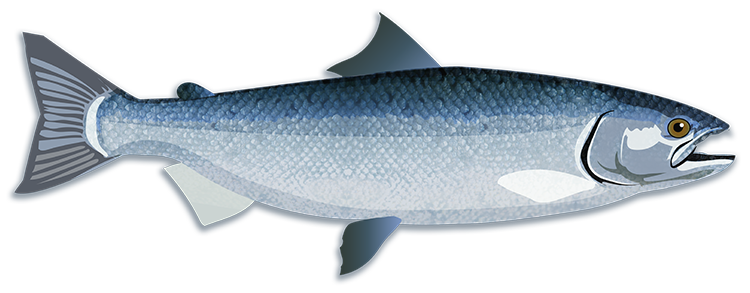Lumpfish Hatchery
Marbase Cleanerfish Inc. is proposing to build and operate a lumpfish hatchery on the site of the former Marystown Shipyard. It will be a core part of the aquaculture industry service hub Marbase is creating.
A natural way to control sea lice on farmed salmon
The Marbase cleanerfish hatchery will provide lumpfish to Atlantic salmon farming operations where sea lice are present and causing the salmon to stress. Lumpfish, which eat sea lice, are a natural biological method of sea lice control for Atlantic salmon. Marbase decided to use lumpfish as its cleanerfish of choice because they are indigenous to Newfoundland waters, are already being used successfully in Norway and Iceland, and because of the research and development work on lumpfish that has taken place at Memorial University’s Ocean Science Centre.
Lumpfish raised in land-based tanks
Lumpfish at the Marbase cleanerfish hatchery will be raised in land-based tanks containing seawater. Marbase is in the process of applying for permits and approvals to address regulatory requirements related to aquaculture operations, water quality, aquatic habitat protection, waste management (handling, treatment, recycling and disposal), employment equity, navigation waters use, water extraction and allocation, contingency planning, and emergency preparedness.
Lumpfish
Consultation ongoing
Marbase has consulted all three levels of government, the public, and interested stakeholders as a way to identify issues and concerns related to the project. Marbase can and will address any concerns identified through project design and planning, as well as through regulatory permitting. Marbase is currently in the process of obtaining the required permits and approvals from the federal, provincial, and municipal governments.
Cost estimated at $20 million
Marbase plans to begin construction after it receives all necessary permits and approvals. Marbase will renovate an existing building at the former shipyard to house the hatchery. Marbase hopes site work will begin in May 2020 with completion forecast by November 2020. The capital cost is estimated at $20 million, with Marbase providing all the funding. Once finished, the hatchery will contain approximately 280 fiberglass tanks of various sizes to accommodate the different sizes of the growing lumpfish.
Small-scale compared to salmon farms
Once it reaches full production, the hatchery will be able to produce 3-5 million market size lumpfish each year – approximately 75-100 tonnes. In comparison, traditional salmon farmers in the province produce approximately 25,000 tonnes of fish in aggregate each year.
Local eggs
During the start-up phase, the hatchery will rely on Memorial University’s Ocean Science Centre and commercial fishers for the collection of fertile females to provide an adequate supply of eggs. The fertilized eggs will be incubated on site. The resulting fry will be reared in the hatchery until they reach commercial size (~25g).

Water leaving hatchery can sustain sea life
This smaller scale of operation is also reflected in the amount of waste the hatchery will produce. Most of the waste will be material filtered from the intake seawater prior to its use in the tanks and from the outflow seawater prior to its return to Mortier Bay. Marbase estimates this will create eight tonnes of sludge per month, which is small in comparison to a commercial salmon hatchery. The company’s waste management plan will explore all opportunities to use this source of organic material, including as agricultural fertilizer.
Both the seawater entering and leaving the hatchery will be treated. The temperatures will be adjusted, and the water will be filtered and purified. Seawater leaving the hatchery will be treated to a standard that supports marine life. Regular monitoring of water quality will ensure compliance with applicable regulations.
Sales will take place dockside at Marbase or at the truck loading bay at Marbase.
Building on Memorial University’s expertise
This project continues to expand on capabilities that already exist at Memorial University and is the final step in converting university-led research into a viable commercial enterprise. In this sense, it is not a new undertaking. The effects of introducing lumpfish into sea cages have already been considered as part of Grieg NL’s environmental impact statement. In addition, Memorial researchers have been providing lumpfish to local salmon farmers for the last few years.
The hatchery will operate year-round as a permanent facility. Staff will be present on a twenty-four-hour, seven-day-a-week schedule. Most activities will occur during the daylight hours. Peak activity will occur when egg fertilization and incubation happens each spring and when lumpfish are sold.
The hatchery hopes to have its first sales in spring 2021.
A biological approach to a biological problem
The potential positive effects are impressive, especially for the finfish aquaculture industry through the potential elimination of pesticides. It is clear this biological approach to a biological problem will create a net environmental benefit.
